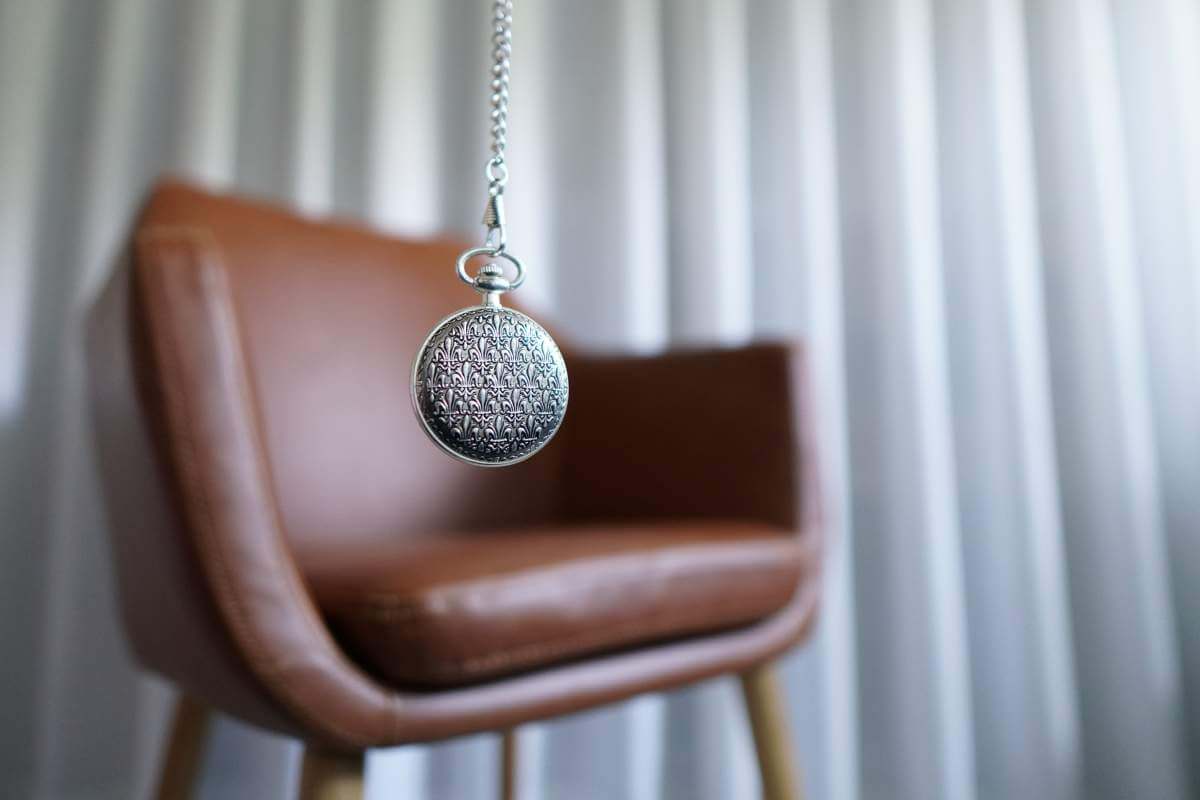From Art to Hypnosis: Alternative Grief Therapies for Widows

Short and Sweet Summary: Alternative grief therapies for widows can be beneficial when traditional therapy options, such as medication and counseling, just aren’t that effective. By exploring different options, you can zero in on the therapy that works best for you and helps you to cope with your loss. Since everyone grieves differently, there’s no one-size fits all therapy.
When your spouse dies, it’s only natural to feel an incredible range of emotions. Sadness, anger, confusion, and loneliness are some of the most common. Coping with a spouse’s death is one of the most difficult things you can endure. After all, it’s the highest form of stress on the Holmes-Rahe Stress Inventory scale.
For many people, traditional grief therapy works well when you’re in the midst of learning how to cope. Traditional therapy involves talking to a therapist about the death and all the emotions that come with it. However, for some widows, traditional therapy isn’t the best option. They may find that they don’t connect with the therapist or that they don’t feel comfortable talking about their emotions.
If traditional therapy isn’t right for you, don’t despair. There are several alternative grief therapies for widows that may be a better fit.
This blog post will explore a few of those options.
EMDR
Eye Movement Desensitization and Reprocessing (EMDR) is an interesting therapy that helps people heal from traumatic life experiences.
This relatively new, but highly effective, form of treatment works for a variety of psychological issues. EMDR has been found to be especially helpful in treating PTSD, anxiety, and depression. It’s becoming more popular as an alternative grief therapy for widows suffering from a traumatic death event.
During the session, the therapist asks you to focus on certain memories or thoughts associated with an especially painful event while following a moving object with your eyes. The therapist will aid you in recalling upsetting memories while they move the object from one side of your body to the other in a set pattern. Studies have shown this type of therapy helps people reduce anxiety or depression symptoms because it breaks the negative neurosis associated with the event. Each EMDR session unblocks the emotional processes that distress has suspended or obstructed. The therapist will repeat the EMDR process until you no longer feel negative reactions to the disturbing memory. When you use bilateral stimulation (the alternating eye movements that activate information from the brain’s two hemispheres), you release the anxiety associated with the disturbing event and associate it with a positive thought process.
The philosophy of this practice is that you can heal the mind – and therefore the body – through a desensitization process in which you reprocess thoughts and memories until they no longer cause distress.
EFT
The Emotional Freedom Technique or EFT is an approach to physical and emotional pain management that helps you learn how your body processes energy and where in your body that energy may be trapped.
EFT works by using your fingertips to gently tap on specific acupressure meridians while focusing on the pain (thought) you want to address so you can restore your body’s energy and bring it into balance. When you tap on these acupressure meridians, you release blockages. When you release these blockages, the problem feeling are released and able to move through your body.
Tapping on these specific meridian points lets your brain know it’s safe to relax by delivering a soothing signal. We widows need to remind our brains that it’s safe to relax!
CBT
Cognitive-behavioral therapy (CBT) is a psychotherapeutic approach that helps you change patterns of thinking and behavior in order to manage depression and anxiety. The three key components of CBT are cognitive, behavioral, and experiential.
A cognitive therapist helps you identify unhelpful thoughts and beliefs. Next, the therapist teaches you different ways of thinking or behaving (called behavior modification). An experiential therapist helps you understand your anxiety triggers and then teaches you how to manage it with coping mechanisms that work for you. It’s important to find techniques you’re comfortable with and that you can easily d like deep breathing or relaxation exercises. An integrative therapist works with you to understand how different factors in your life interact with one another and explore potential reasons for your anxiety.
This holistic approach provides valuable insight into your thought processes that cause distress.
DBT
Dialectical behavioral therapy (DBT) is a type of psychotherapy that helps people transform negative thoughts and behaviors by thinking in two opposites. This type of behavior therapy can be helpful for people who have trouble managing their emotions by accepting that change leads to growth and healing.
DBT is founded on the belief that individuals are perpetually trying to reconcile two conflicting desires: the need to change and the need to maintain the status quo. By teaching people how to manage these opposing forces, DBT provides skills like mindfulness, distress tolerance, and emotion regulation. Additionally, DBT instructs people on how to handle difficult situations effectively and how to communicate clearly with others.
By exploring thoughts and emotions with a therapist, you can learn to understand and accept a different perspective, eventually developing a healthier relationship with yourself.
MBCT
Mindfulness-Based Cognitive Therapy (MBCT) is a type of cognitive therapy that combines mindfulness techniques with traditional cognitive-behavioral methods to help people with depression and anxiety. Studies have shown that MBCT can be an effective treatment for people who have had multiple episodes of depression, and it may also be helpful for treating anxiety, stress, and pain.
MBCT is based on the premise that negative thinking patterns can often trap us in cycles of worry or despair. By teaching patients to pay attention to their thoughts and feelings in a non-judgmental way, and to observe them without making their thoughts mean something about them as a person, MBCT can help break these cycles. This mindfulness practice allows patients to become more aware of, and challenge, their thoughts and emotions, which can lead to healthier choices.
ART THERAPY
The grieving process can be overwhelming when your spouse dies. While there are many traditional forms of therapy available to help widows cope with grief, art therapy can also be an effective way to work through emotions.
Unlike therapies that require verbal expression, art therapy allows you to communicate through images and symbols. This can be a helpful way for those who find it difficult to express their feelings verbally. You can also use art therapy to explore your deceased spouse’s life and death.
Some widows may find that painting or drawing pictures of their deceased spouse helps them come to terms with their loss. Others may prefer sculpting or making objects out of clay to process their emotions. And others will use poetry or writing in art therapy as their preferred form of self-expression.
ALPHA-STIM
Alpha-Stim therapy is a type of alternative therapy that uses electrical stimulation to help you relax and feel calmer. This can be a helpful alternative for people who don’t want or can’t tolerate traditional therapy methods.
By delivering a low-level electrical current to the brain, Alpha-stim helps to alleviate symptoms of anxiety, depression, and insomnia. It’s also helpful in reducing PTSD symptoms, such as flashbacks and nightmares. This therapy involves using alpha waves, associated with relaxed and calm states, to increase theta waves, which are beneficial for improving mood and reducing stress.
While Alpha-Stim is not a cure for trauma or grief, it can help provide relief from the symptoms that make these experiences so difficult. If you’re struggling to cope with trauma or grief, Alpha-Stim therapy may be worth considering as an alternative option.
HYPNOSIS
Another form of alternative therapy is hypnosis. Hypnosis is a natural state that allows you to enter a deep state of relaxation and focus, which makes it compatible with other therapy methods, like EFT.
Even though grief is a natural response to loss, it can be incredibly challenging to cope with. While under a hypnotic focus, you’re more open to bringing the emotions of grief like anger, guilt and sadness to the surface and learning how to cope with your distress.
Hypnosis may also be helpful in dealing with the physical symptoms of grief, such as fatigue and insomnia. It can help people to relax and sleep better as well as provide support and guidance through the grieving process.
WIDOW WRAP UP
Alternative and complementary grief therapies for widows can help when traditional therapy options, such as medication and counseling, just aren’t effective. By exploring different options, you may find the therapy that works best for you and helps you to cope with your specific loss.
If you’re interested in trying an alternative or complementary grief therapy, be sure to do your research and find a qualified therapist.
And it’s always a good idea to consult with your healthcare professional before starting any new therapy.

